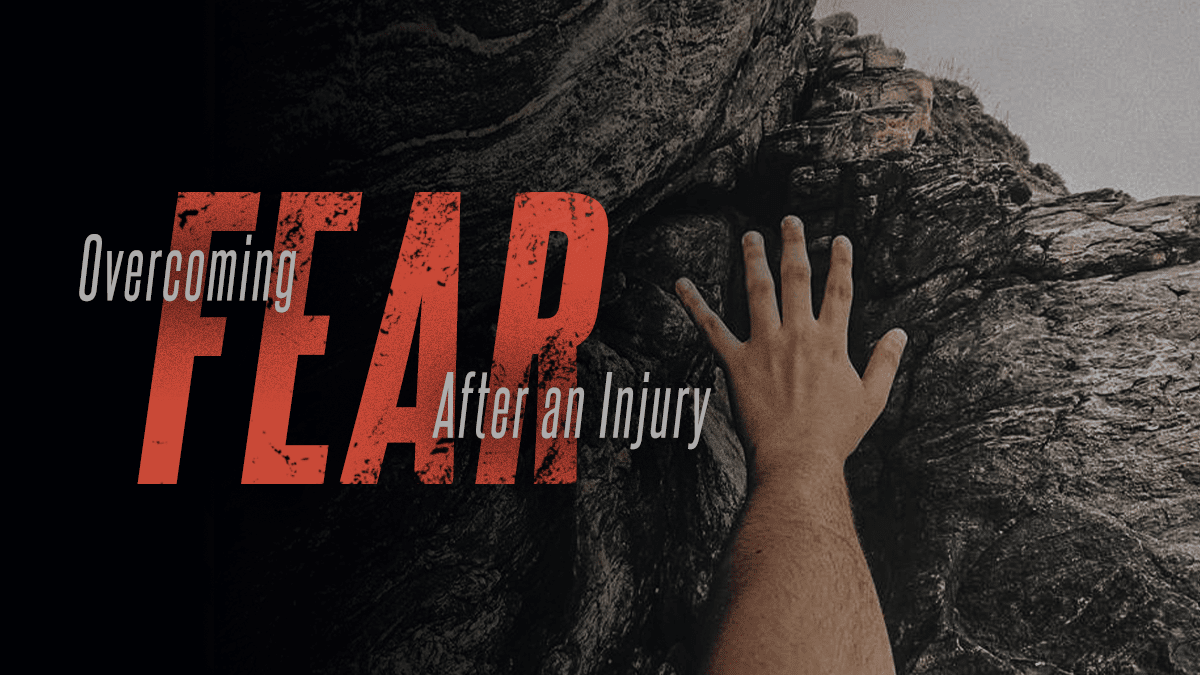Overcoming Fear of Reinjury

Injuries are a part of rock climbing as much as learning to belay, taking your first whipper, and getting lost while using a guidebook. They will happen. The only difference is that once you are healed up, there is always a fear that you must overcome before returning to rock climbing. Whether you had a finger injury, knee surgery, or rolled ankle, when it’s time to get back on the wall, you will probably hesitate for fear of reinjury or a more general mental block. It’s only natural. So how can we overcome fear after an injury? I am as disappointed as you to tell you that I have no magic spell, no time-tested technique to get you through this trying time. You know some of the steps: pop an Advil, stretch it out, and tape up as you ease back in. But let’s take a look at a couple of things that seasoned climbers have learned over the years so that we can help you overcome fear of reinjury.
Overcome fear of reinjury by remembering what caused your injury.
I cannot tell you how many times I have seen climbers reinjure themselves on the same movement over and over again. When an injury is fresh, we remember all too well the exact moment that broke us.
Your right hand bore down on a half-pad undercling crimper. You plant your left foot. You know this is the crux move. You feel the thumb collapse over your fingers—creating a full crimp grip—and you fire for the left hand.
“Pop!”
These moments ring out in our minds as clearly as the actual “pop!” of your pulley rang out in the valley. But as you gain distance from the event, you won’t replay the moment so regularly.
Part of overcoming the fear of reinjury is to understand the things that led to the injury in the first place and making an effort not to repeat them. So, when you are finally feeling healthy and that moment of the “pop” seems far away, bring that moment to the front of your mind and run it through.
Let’s use our example below:

1) Right hand. Right-hand underclings are not for you. While taping can offer real stability to an injury, it can also serve as a great reminder of where the injury was.
2) Undercling. Remembering hold orientation or specific body positioning can help you avoid re-injury as well. When you see an undercling, make sure to be on the alert as repeated stress is more likely to reinjure than, say, a down-pull.
3) Crimper. That may go without saying, but let’s go ahead and drive the point home: careful on crimps!
4) Crux. Nothing feels better than sticking the crux move, or the hardest move on a climb. But as you come back to climbing after an injury, it’s important to remember that you don’t need to hit the crux this go! Find success in the process, not just sending.
5) Full crimp. The full crimp hand grip strikes again. The lesson here is that every time you wrap that thumb over for a full crimp, it should be a decision you make (not a subconscious act, as it is for many of us).
You can go through this process with any injury in any sport. Seasoned athletes of all disciplines use this technique to ease their minds as they return after injury.
Comment below with your injury, and let’s see if we can break it down together!
Overcoming a mental block after a rock-climbing injury is a little tougher.
Sometimes we may not be afraid of reinjury, per se, but have a more general fear of the activity that injured us in the first place: a mental block. Let’s use another example.

You are bouldering outdoors for the first time. You nailed the crux on a tough boulder problem, and now you have to top out. Uh oh. Your foot slides out from under you, and you are overcome with that lightning bolt of terror in your gut as you fall. Your spotters do a good job and make sure you land on the pads, but there was a rock sticking up through them. Your ankle rolls on the rock as you land.
“Crack!”
Ankle injuries are all too common in bouldering. You’ve seen the safety videos; every fall is a ground fall! In this case, after your ankle heals and you are ready to climb again, you may be less worried about reinjury and have more of a mental block for bouldering. Let’s talk about some ways to manage that fear and ease back into the sport while still respecting that little voice in your head that says, “Yo, this is dangerous! What are you doing!?”
First, a great way to get back into climbing after an injury with incredibly low risk is to climb some top rope. Bouldering is a high impact sport that always involves ground falls, and falling can be a huge fear factor. So by slinging a top rope outdoors or doing a top rope session in the gym, you give yourself a chance to let go of the wall at any time with no risk of hitting the ground. The low impact nature of top-roping makes it excellent for injury recovery. Look for ways to alleviate risk like top-roping, trusted spotters, or more pads, to overcome a mental block when climbing after an injury.




